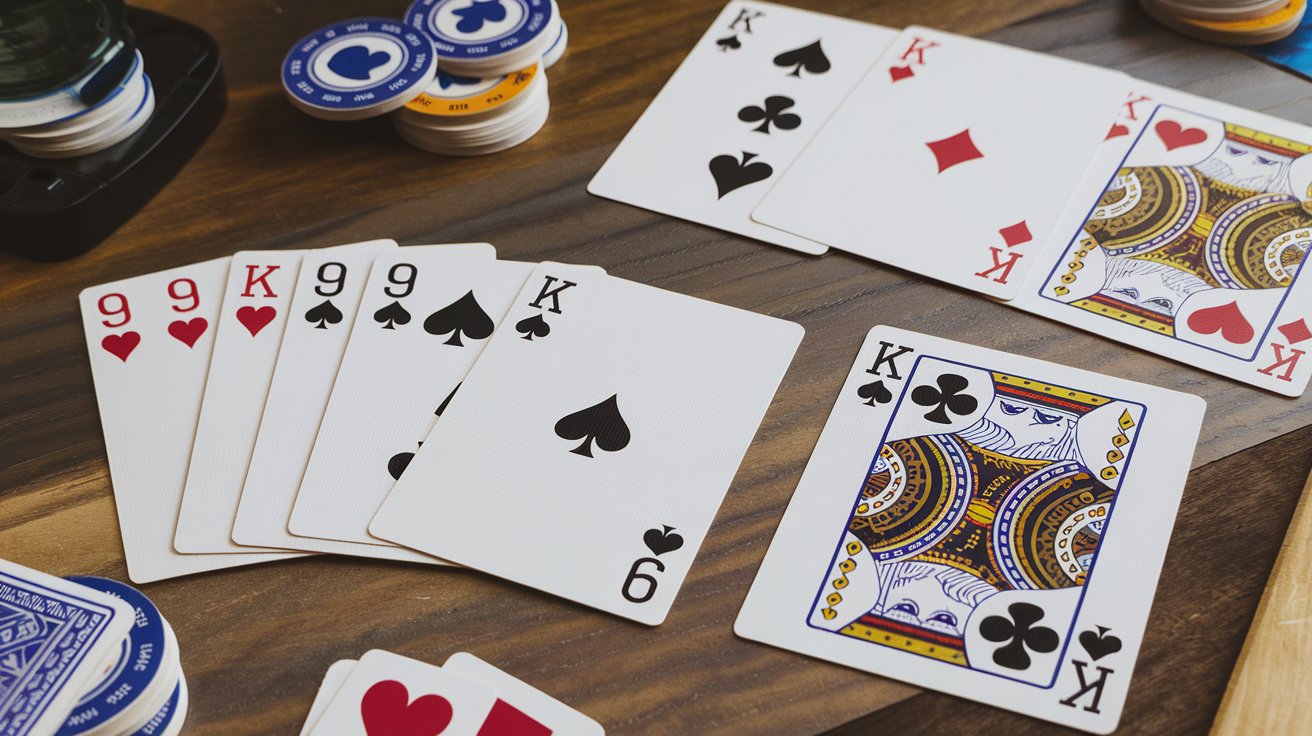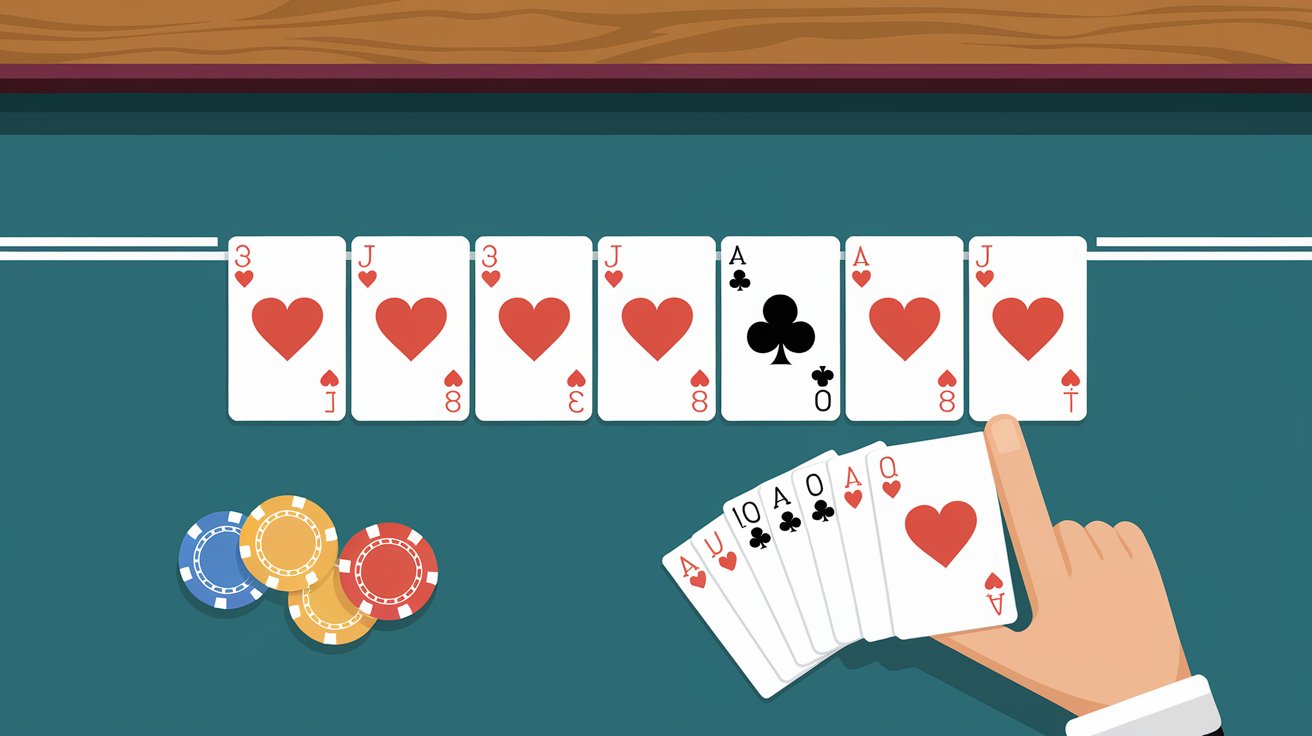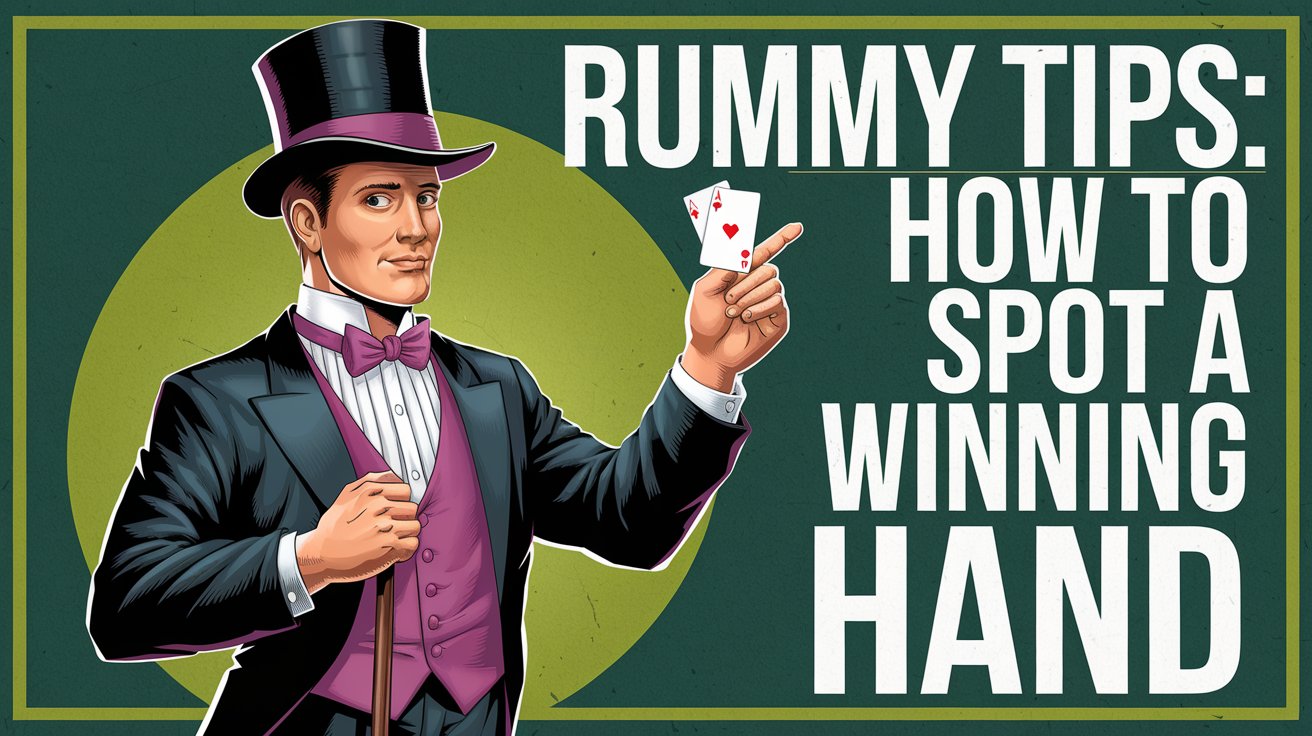Rummy is a popular card game that requires both skill and strategy to win. While a lot of the game revolves around your ability to form valid combinations, it also depends on your ability to spot a winning hand. Knowing when you have the right combination of cards and when you’re just a few moves away from declaring can make all the difference in Rummy. But how can you spot a winning hand before it’s too late? In this blog post, we’ll go through the key signs to look for and share expert tips that will help you identify a winning hand faster, ensuring you have an advantage in every game.
Understanding the Basics of Rummy

Before we dive into the specifics of spotting a winning hand, it’s important to have a firm grasp of Rummy’s basic rules. Rummy is played with a standard deck of 52 cards. The goal is to form valid combinations (sets and runs) and eventually declare “Rummy” by getting rid of all the cards in your hand. There are two main types of combinations in Rummy:
- Set: A group of three or four cards of the same rank but different suits (e.g., 7♠ 7♣ 7♦).
- Run: A sequence of three or more consecutive cards of the same suit (e.g., 5♠ 6♠ 7♠).
A hand is considered “complete” when you’ve formed all the cards into sets and runs. At that point, you can declare and win the game.
Now that you understand the basics, let’s look at how to spot a winning hand.
Key Signs of a Winning Hand in Rummy

1. Look for Sets and Runs Early On
A winning hand in Rummy will typically feature at least one set or one run, or even both. The first step to spotting a potential winning hand is to look for these combinations in your initial hand of cards.
- Sets: If you are dealt cards that have repeating numbers (e.g., 7♠ 7♣ 7♦), you’re off to a good start. Sets of three or four cards are the foundation of a winning hand.
- Runs: Runs are sequences of consecutive cards of the same suit. For example, if you have 3♠ 4♠ 5♠ in your hand, you’ve already formed a valid run. Runs are just as important as sets when it comes to forming a winning hand in Rummy.
When you receive your cards, immediately scan them for any obvious runs or sets. This early detection is crucial, as it will guide your decisions throughout the game.
2. Evaluate the Number of Unmatched Cards
While it’s great to spot potential sets and runs, there will always be a few cards that don’t fit into any combination initially. The fewer unmatched cards you have, the closer you are to a winning hand. These leftover cards are sometimes referred to as “deadwood,” and they prevent you from declaring.
- Fewer Deadwood Cards: If you only have one or two unmatched cards, then you are very close to completing your hand. The fewer cards you have that don’t belong to a set or run, the easier it will be to spot a winning hand.
- Check for Multiple Ways to Form Combinations: When looking at your deadwood cards, check if they can easily form combinations with the cards you already have. For example, if you have a 5♠ and a 6♠ but no 7♠ yet, you might want to draw or pick up a 7♠ to complete your run.
3. Look for Wild Cards or Jokers
Wild cards or jokers play an essential role in spotting a winning hand. These versatile cards can substitute for any card in a set or run, allowing you to complete a combination that you might otherwise be missing.
- Single Wild Card: If you have a joker or wild card, it opens up numerous possibilities for you to complete your sets or runs. For example, if you have 9♠ 10♠ and a joker, you can easily complete a sequence by considering the joker as 8♠ or Jack♠.
- Multiple Wild Cards: If you’re lucky enough to have multiple wild cards, you’re closer than ever to a winning hand. Wild cards make it easier to form sets and runs, as you can substitute them for missing cards.
If you have jokers or wild cards, don’t discard them quickly. They are your safety net in Rummy, and knowing how to use them effectively can help you form a winning hand faster.
4. Pay Attention to Your Opponents’ Moves

Rummy is as much a game of strategy as it is about skill. If you want to spot a winning hand, you must also pay close attention to what your opponents are doing. Are they discarding cards frequently? Are they picking up cards from the deck or open pile that could complete their sets or runs?
By observing their actions, you can get a better idea of which cards they need and adjust your hand accordingly. For example, if an opponent picks up a card that completes a set or run, take note of what that card is. You can avoid discarding that card in future turns, as it could give away your winning hand to the opponent.
5. Assess the Value of Your High Cards
High cards like face cards (Kings, Queens, Jacks) and 10s are valuable in Rummy, but they are also riskier. If you hold onto too many high cards, they can become deadwood if you are unable to form sets or runs with them.
- Low Deadwood Value: The goal is to keep the value of your deadwood as low as possible. High-value cards can end up costing you a lot of points if your opponent declares. For example, a King or Queen is worth 10 points each in most versions of Rummy.
- Strategic Discards: If your hand includes a lot of high-value cards and you don’t see an easy way to use them in a set or run, it might be time to discard them. Be cautious of discarding them too early, though, as doing so can give away valuable information to your opponents.
6. Look for Potential to Form Multiple Sets and Runs
One of the signs that you are close to a winning hand is when you have the potential to form multiple sets and runs. The more combinations you can form, the quicker you’ll be able to declare. For example, if you have cards like:
- 5♠ 6♠ 7♠ (run)
- 7♦ 7♣ 7♠ (set)
- 9♠ 10♠ (incomplete run)
The combination of multiple sets and runs will give you flexibility and increase your chances of completing the hand.
7. Track the Cards in the Open Pile
The open pile can give you valuable insight into what cards your opponents are after. If a particular card has been picked up by one of your opponents and it’s been discarded by others, this might suggest that they need it to complete a set or run. You can use this information to avoid discarding that same card, potentially preventing your opponent from completing their hand.
- Card Tracking: Try to keep track of which cards have been discarded and which are still in play. This will help you understand what your opponents are holding onto and what they might need to complete their hands.
8. Be Mindful of the Endgame
As the game progresses, spotting a winning hand becomes a matter of urgency. The endgame in Rummy is critical because players must make their moves quickly to prevent others from winning. At this stage, if you have already formed a set or run, keep an eye out for the remaining cards you need.
- One Card Away: If you’re just one card away from completing your hand, keep a close eye on the discard pile. You’ll want to be ready to pick up the right card when it’s discarded or drawn, as that’s your moment to declare.
- The Risk of Going Out: If your opponent is close to declaring, it might be time to go on the defensive. Try to hold back your sets and runs or discard high-value cards to minimize your points in case someone declares.
Conclusion
Spotting a winning hand in Rummy isn’t just about luck—it’s about strategy, observation, and decision-making. By understanding the key indicators of a winning hand, you can give yourself a competitive edge in every game. Keep an eye on your cards, assess the combinations you have, and always be aware of the cards your opponents are holding. By doing so, you’ll be able to spot a winning hand quickly, making it easier to declare and claim victory in Rummy.
With these expert tips and strategies, you’ll be able to play Rummy with confidence, whether you’re playing in a casual setting with friends or in a more competitive environment. So, the next time you’re dealt a hand, take a moment to evaluate the possibilities, and don’t let a potential winning hand slip away!

Zareb Saleh is a journalist at Gulf Today and a ghostwriter for Gameoholic, specializing in gaming, technology, and digital culture. With a keen eye for industry trends, he delivers insightful stories that engage and inform readers.




